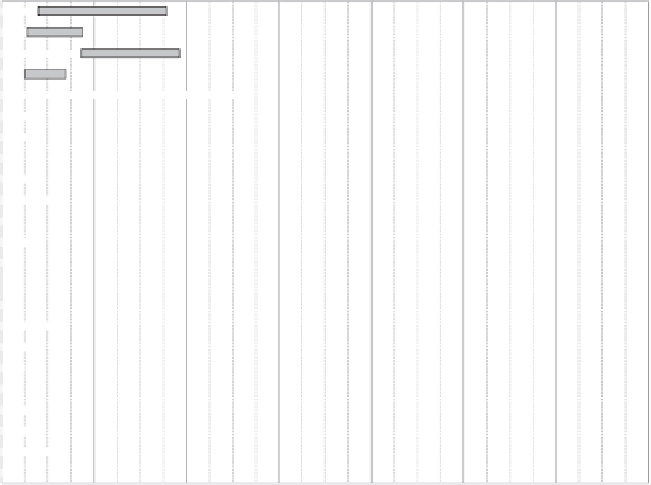Environmental Engineering Reference
In-Depth Information
Asparagus
Bean, snap
Broccoli
Carrot
Cauliflower
Pea
Pickle
Potato, sweet
Potato, white
Spinach
Squash
Tomato, peeled
Tomato, product
Apple
Apricot
Berry
Cherry
Citrus
Peach
Pear
Pineapple
Pumpkin
0
20
40
60
80
100
120
140
1,000 Liter/tonne
Figure 9.6
Typical minimum, mean, and maximum raw wastewater volume discharged from the
processing of selected fruits and vegetables in the United States.
Adapted from North Carolina Department of Environment and Natural Resources (NCDENR), 2009.
The meat and poultry industry has variable ranges of water use, too. In beef-slaughtering
plants, typical water consumption is 350 gallons/animal, but it ranges from 187 to 458 gallons/
animal. In poultry-processing it ranges from 3.5 to 10.0 gallons/bird for broilers and 11 to 23
gallons/bird for the case of turkeys (NCDENR, 2009).
As could be expected, the beverages industry has a very high water consumption because
water is the main ingredient. For instance, in 2007 Coca-Cola, the largest beverage company
in the world, consumed 300 billion liters of water with an efficiency of 2.47 liter of water per
liter of beverage. For every liter of beverage, Coca-Cola used 1.47 liters for rinsing, cleaning,
and cooling (Coca-Cola, 2008). The beer maker Anheuser-Busch (2007) reported a water
consumption of 93.4 billion liters with an efficiency of 5.5 hectoliters of water per hectoliter
of product.
Water use in food-processing facilities
In the food industry, water use can be divided in four groups:
1.
Process water as a primary ingredient.
2.
Cleaning water for washing and rinsing fruits, vegetables, and carcasses and for washing
crates, bottles, and containers.
3.
General-use water to convey product through the process, for product cooling, for cooking
and blanching, for product pasteurization, and to sanitize equipment and processing
rooms.









